Brought to you by: www.GameRoomRepair.com
![]() Pictures of My Collection
Pictures of My Collection
Brought to you by:
www.GameRoomRepair.com
Here are a few of the items in my collection. See my website at http://www.GameRoomRepair.com for details on one of the biggest games in my collection, the Sega R360 flight simulator. I also repair all types of games and antique devices including clocks, phonographs, music boxes, Lionel trains, soda and gumball machines. I can give you a quote on anything from a simple repair to a complete mechanical, electrical and cosmetic restoration. So if you have an item that needs some attention, please call or E-mail me for a quote.
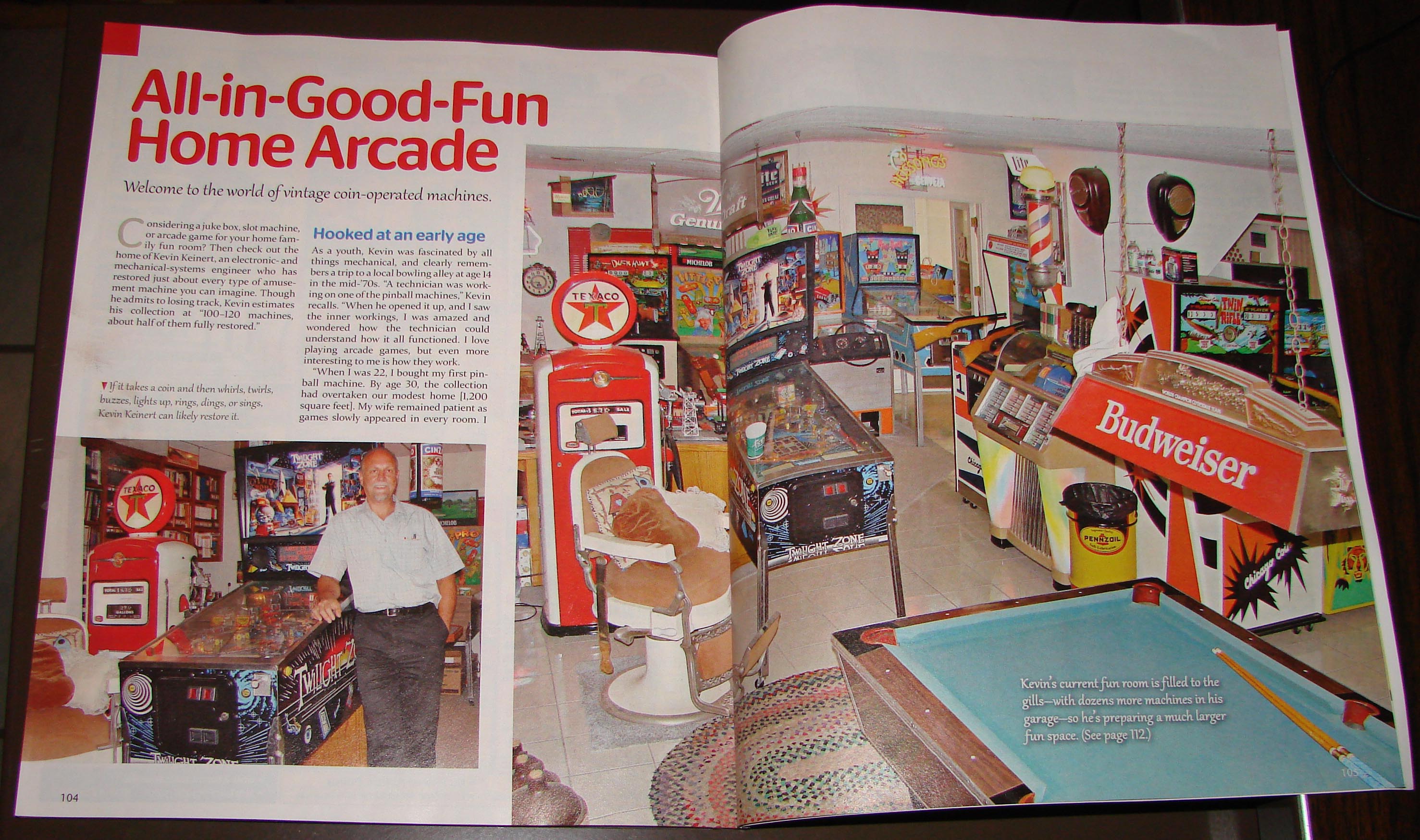 The picture to the left is a magazine article on my gameroom, published in 2016.
The picture to the left is a magazine article on my gameroom, published in 2016. 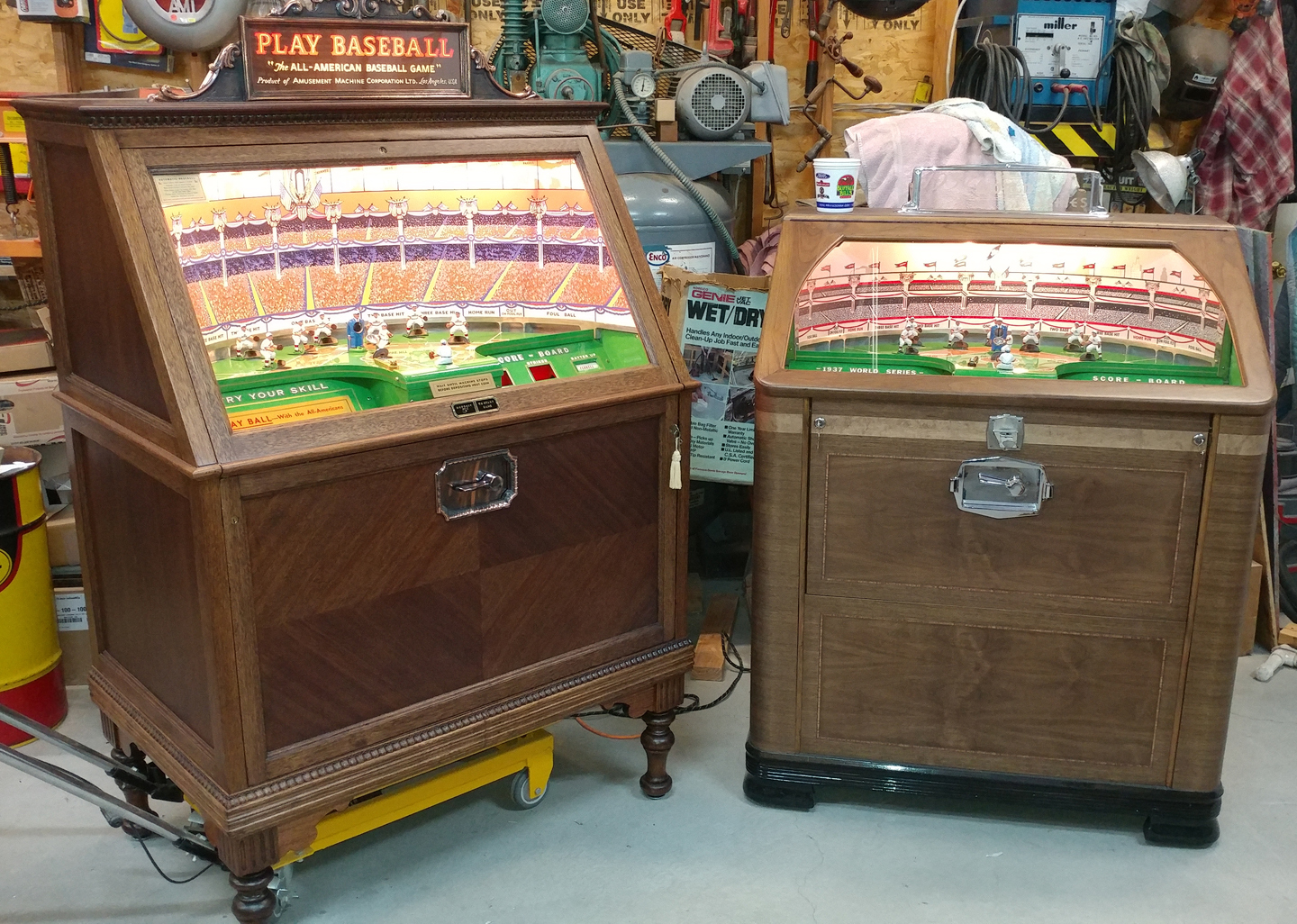
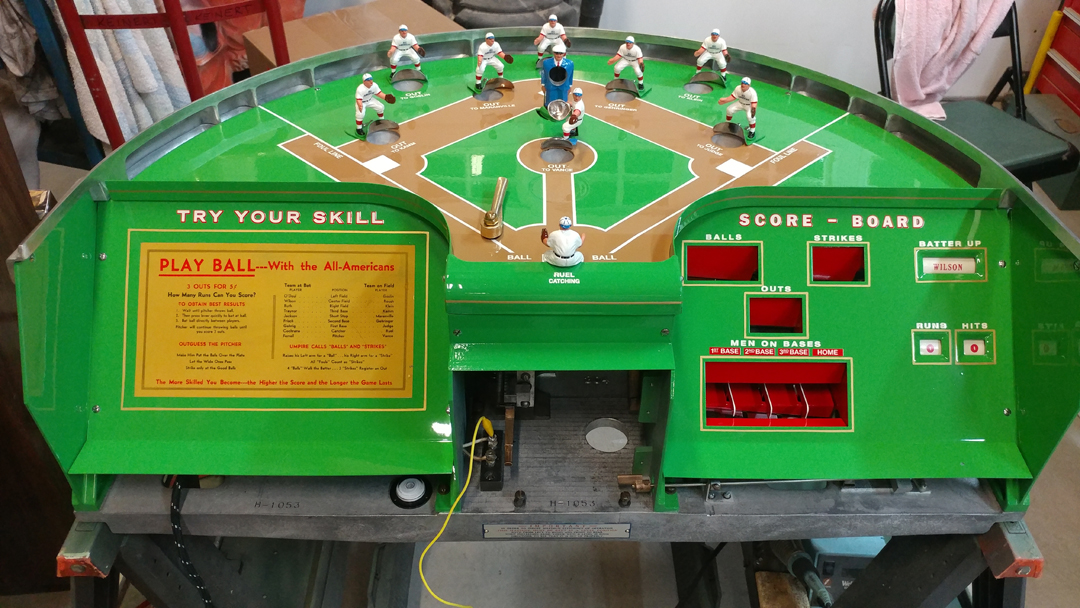 In the first picture, the game on the left is my All American Baseball arcade machine, made between 1929 and 1934 by the Amusement Machine Corporation. I restored it in 2017.
The game on the right is a Rockola 1937 World Series that I also restored at the same time. It belongs to a customer.
Rockola bought the tooling and the rights to manufacture the game from Amusement Machine Co.
The internal mechanisms are almost identical but there are a few notible differences that I describe in a video posted on Youtube.
In the first picture, the game on the left is my All American Baseball arcade machine, made between 1929 and 1934 by the Amusement Machine Corporation. I restored it in 2017.
The game on the right is a Rockola 1937 World Series that I also restored at the same time. It belongs to a customer.
Rockola bought the tooling and the rights to manufacture the game from Amusement Machine Co.
The internal mechanisms are almost identical but there are a few notible differences that I describe in a video posted on Youtube.
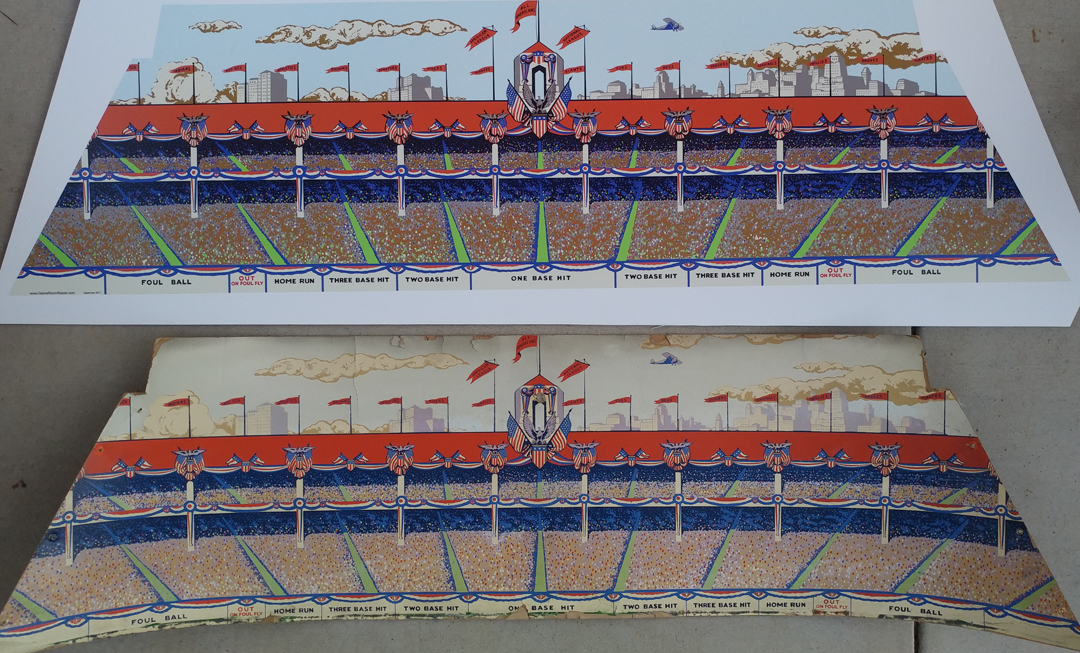
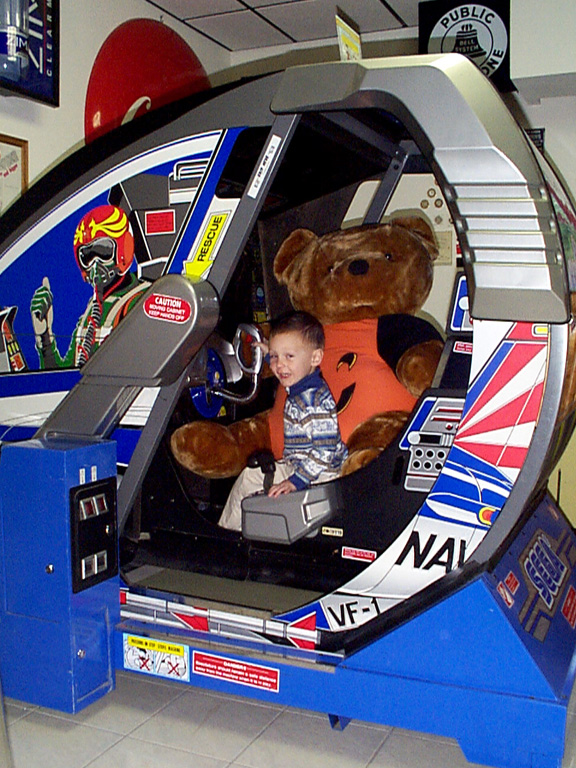 Sega After Burner Deluxe from 1987. The cabinet has two axis of movement. The whole cockpit tips back and forth (pitch) and
the seat moves from side to side (roll). This machine is limited to about a 20º axis of rotation for pitch and roll,
unlike the Sega R360 (seen at the bottom of this page) that spins completely upside down, and all around.
Sega After Burner Deluxe from 1987. The cabinet has two axis of movement. The whole cockpit tips back and forth (pitch) and
the seat moves from side to side (roll). This machine is limited to about a 20º axis of rotation for pitch and roll,
unlike the Sega R360 (seen at the bottom of this page) that spins completely upside down, and all around.
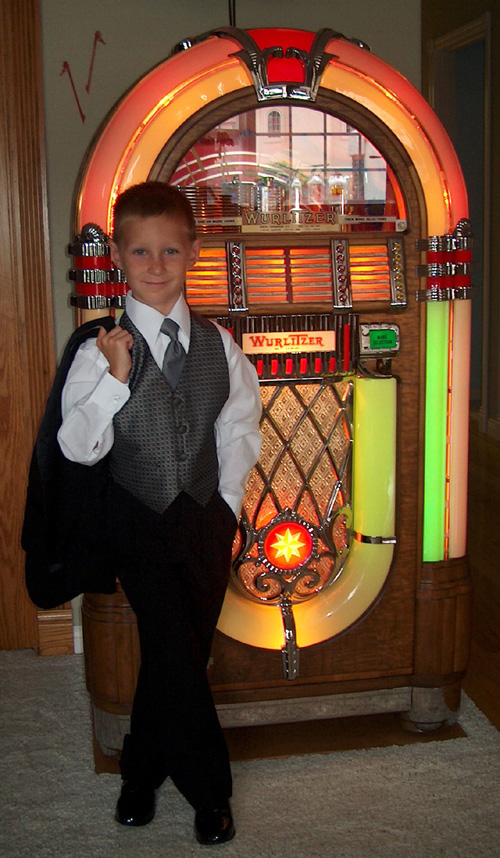 Daniel Keinert with our 1946 Wurlitzer model 1015 jukebox. I restored this in 1986 with 340 hours of labor.
The entire machine was disassembled and rebuilt. I took many pictures of the restoration that I would be happy
to share with anyone interested. Other jukes in my collection include Wurlitzer models 312 and 1100, Packard Manhattan,
AMI Continental 2 Stereo Round, Seeburg M100C, an M146 (Trashcan) and an SS160 stereo.
Daniel Keinert with our 1946 Wurlitzer model 1015 jukebox. I restored this in 1986 with 340 hours of labor.
The entire machine was disassembled and rebuilt. I took many pictures of the restoration that I would be happy
to share with anyone interested. Other jukes in my collection include Wurlitzer models 312 and 1100, Packard Manhattan,
AMI Continental 2 Stereo Round, Seeburg M100C, an M146 (Trashcan) and an SS160 stereo.
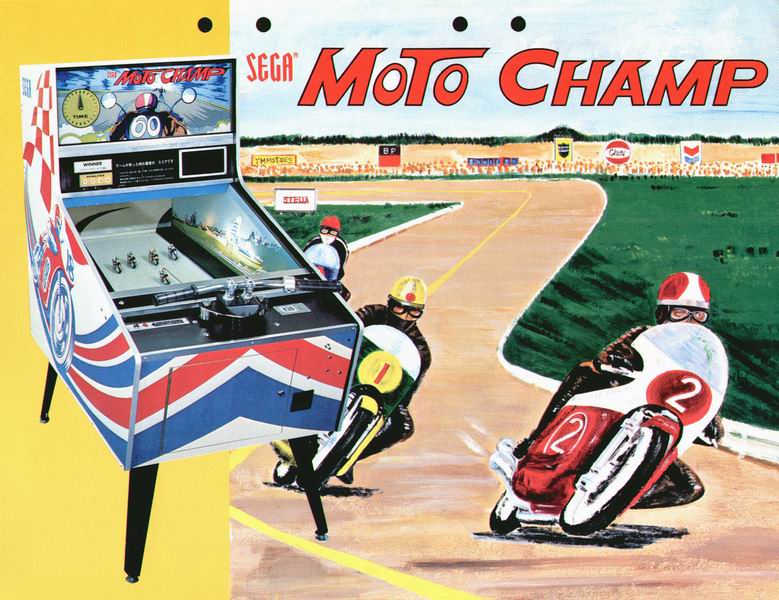
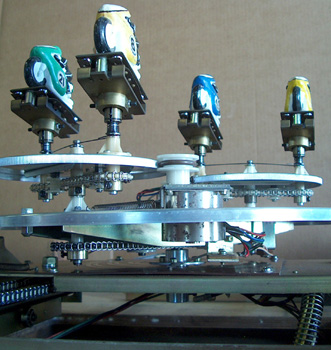 CLICK HERE to watch the video of my 1973 Sega Moto Champ that I restored in 2008.
CLICK HERE to watch the video of my 1973 Sega Moto Champ that I restored in 2008. 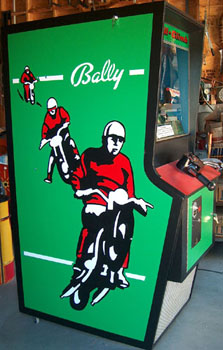 CLICK HERE to watch the video of my 1972 Bally Hill Climb that I restored in 2007.
CLICK HERE to watch the video of my 1972 Bally Hill Climb that I restored in 2007. 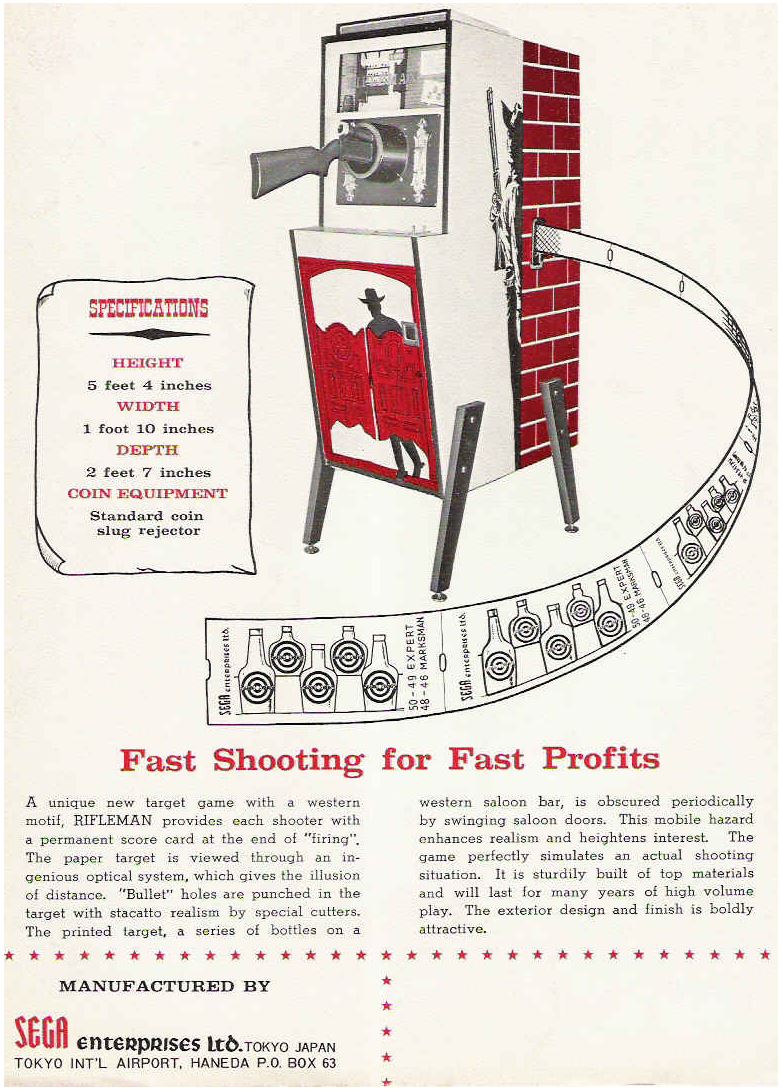
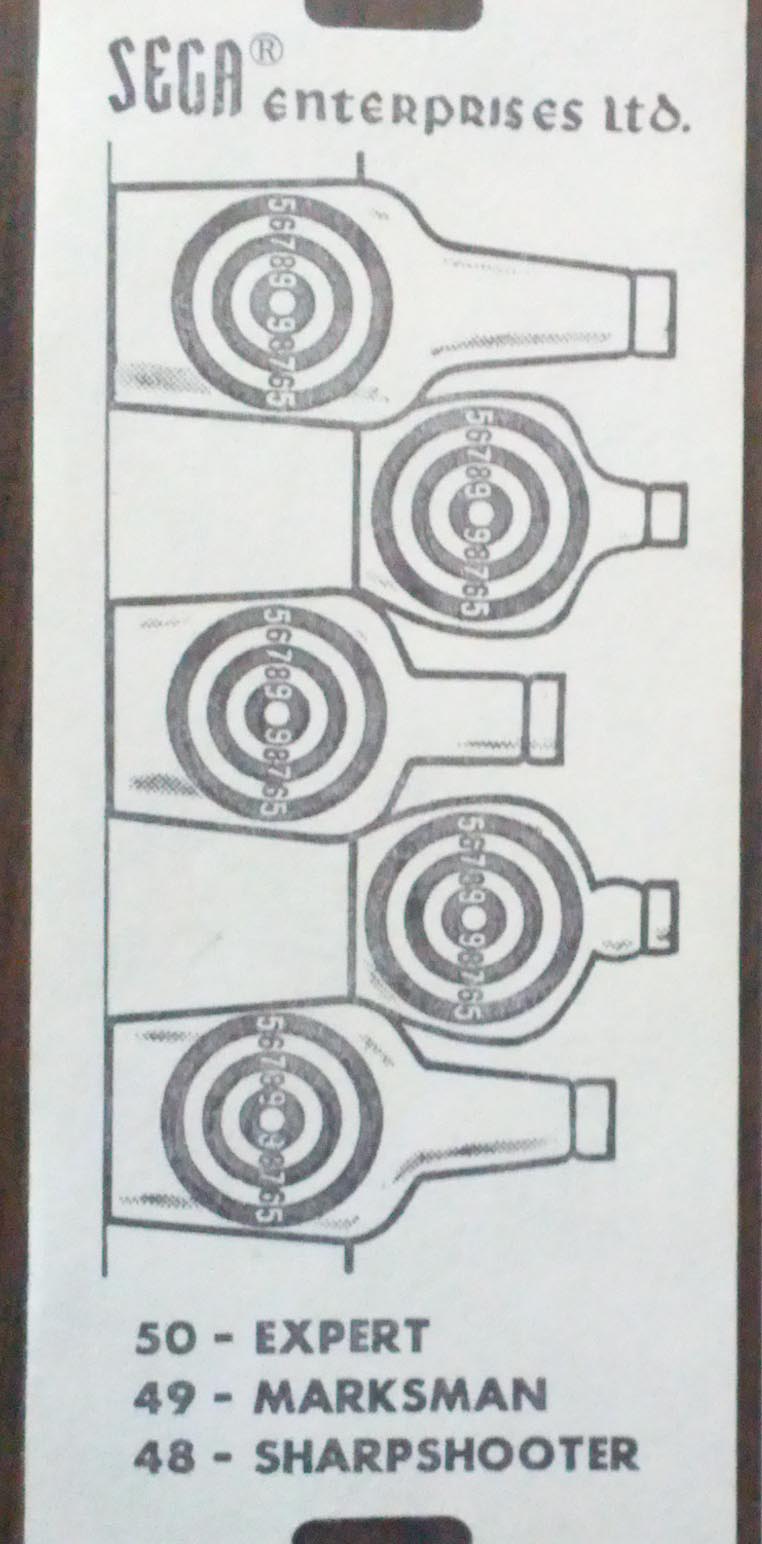 CLICK HERE to watch the video of my Sega Rifleman that I restored in 2016.
CLICK HERE to watch the video of my Sega Rifleman that I restored in 2016. 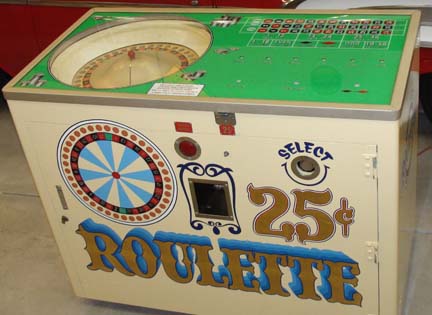 CLICK HERE to watch the video of my 1960 Acme "Rollette" electromechanical roulette payout gambling machine.
CLICK HERE to watch the video of my 1960 Acme "Rollette" electromechanical roulette payout gambling machine. 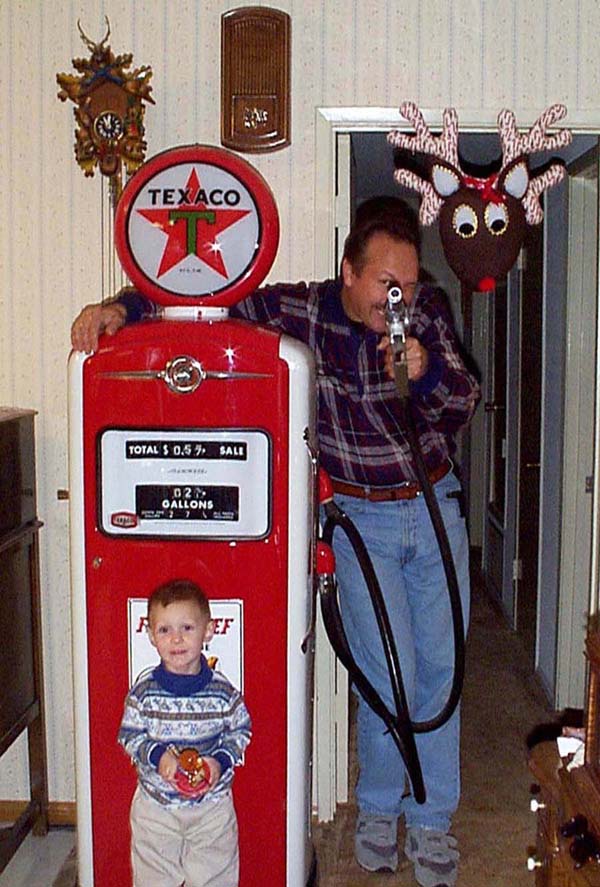 This is a 1958 Bennet gas pump. During restoration, I installed a microswitch in the pump nozzle
and connected a motor to the mechanics inside the pump. When you squeeze the lever on the nozzle handle, the numbers
on the display count up, you hear the bell ding at every gallon and the little "spiral loop" of wire in the "site glass"
spins (the site glass is located towards the top of the pump, just above the main display of gallons pumped and price paid).
This spiral loop of wire is called the "Tell Tale".
This is a 1958 Bennet gas pump. During restoration, I installed a microswitch in the pump nozzle
and connected a motor to the mechanics inside the pump. When you squeeze the lever on the nozzle handle, the numbers
on the display count up, you hear the bell ding at every gallon and the little "spiral loop" of wire in the "site glass"
spins (the site glass is located towards the top of the pump, just above the main display of gallons pumped and price paid).
This spiral loop of wire is called the "Tell Tale".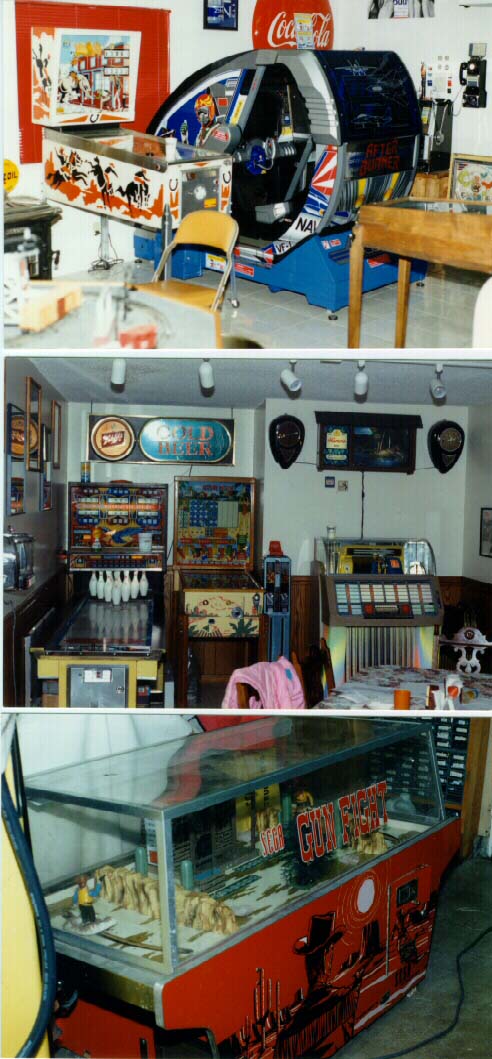
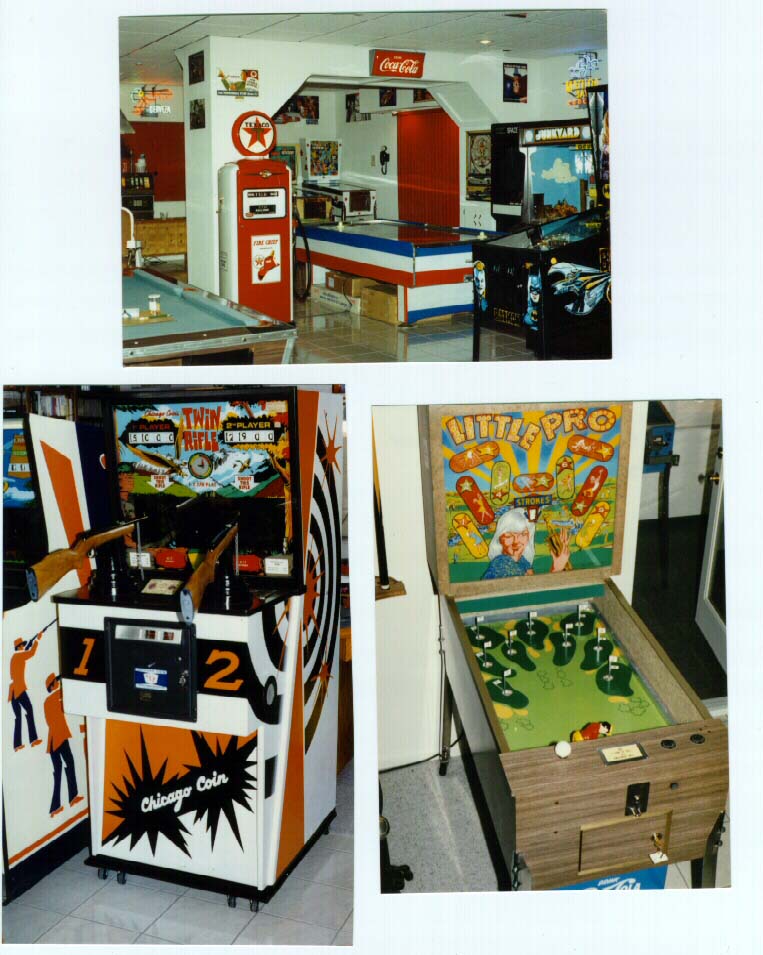 Some of the games in my collection.
Some of the games in my collection.
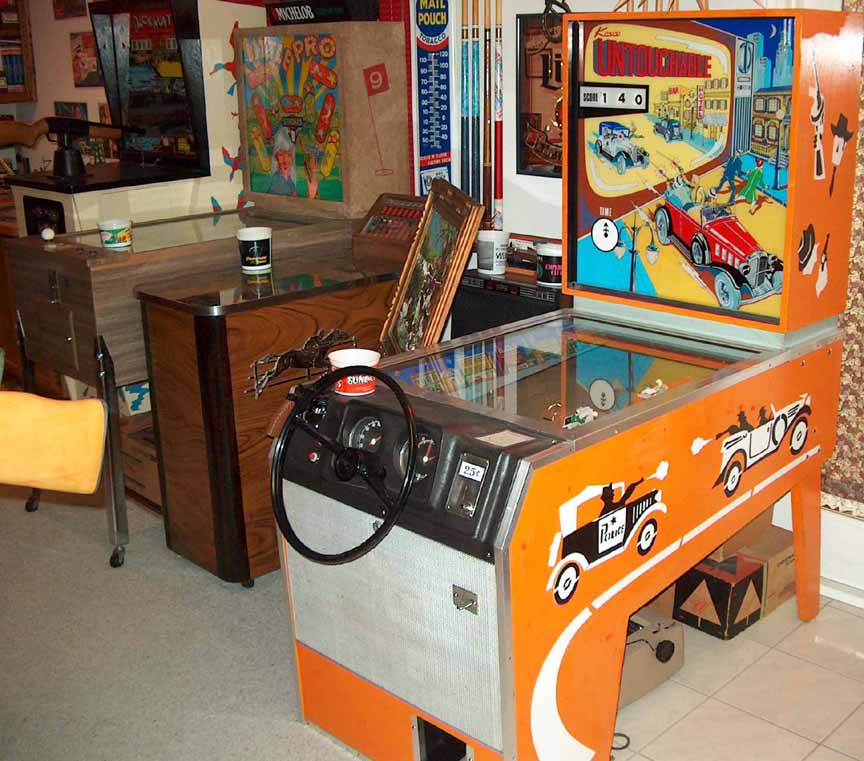 The game in the foreground is a Kasco Untouchable (1970's vintage). It has two cars on a treadmill, one is a cop car (that you control)
and the other is the robber's car. The player chases the bad guys and shoots at them with the pistol mounted on the front of the cabinet. Each time you pull the
trigger, a beam of light shoots out of the front of your cop car. If you hit a photo sensor in the robber's car, a bell rings, you score 10 points and one of the
robbers in the car slumps over momentarily (as if hit by your bullet). Game sounds are provided by an 8-track tape that includes machine gun fire, pistol shots,
car engines racing and tires screeching along with the occasional scream from an innocent female by-stander who is caught on the street.
The game in the foreground is a Kasco Untouchable (1970's vintage). It has two cars on a treadmill, one is a cop car (that you control)
and the other is the robber's car. The player chases the bad guys and shoots at them with the pistol mounted on the front of the cabinet. Each time you pull the
trigger, a beam of light shoots out of the front of your cop car. If you hit a photo sensor in the robber's car, a bell rings, you score 10 points and one of the
robbers in the car slumps over momentarily (as if hit by your bullet). Game sounds are provided by an 8-track tape that includes machine gun fire, pistol shots,
car engines racing and tires screeching along with the occasional scream from an innocent female by-stander who is caught on the street.
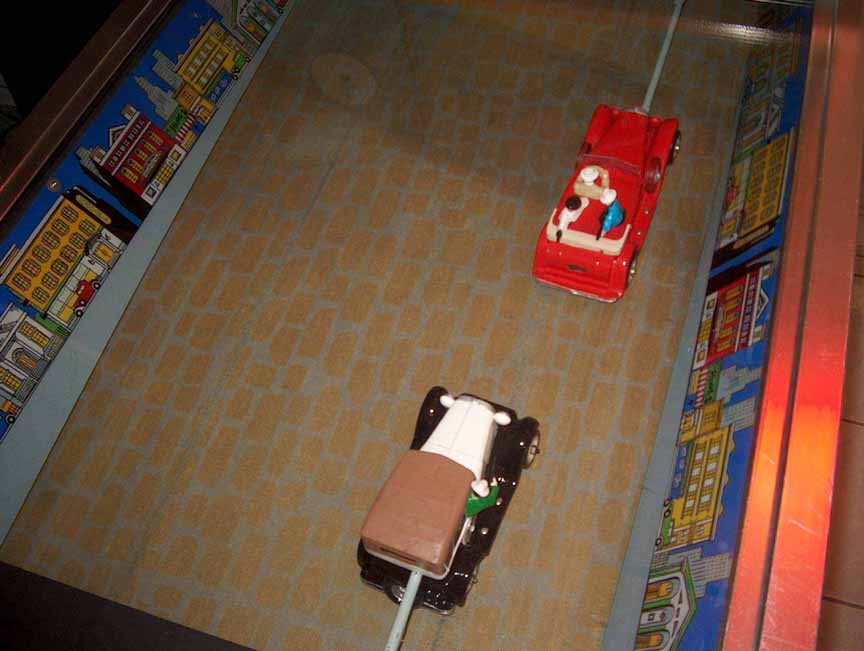 A close up of the cars in the Kasco Untouchable. The side-to-side movement of the robber's car is random as the roadbed underneath (treadmill) moves.
You control the cop car with the steering wheel on the front of the cabinet. There is a gas pedal on the front of the cabinet. Pressing it down causes
the treadmill to speed up and moves the robber's car closer to the car cop (which gives the appearance that you are gaining on them...). Be careful though,
don't steer all the way to the left or right side walls. If you do, the robber's will temporarily "pull away" from you making it harder to hit them when you shoot.
CLICK HERE to visit my "Repair and Restoration Webpage" where you will find additional photos
of this game.
A close up of the cars in the Kasco Untouchable. The side-to-side movement of the robber's car is random as the roadbed underneath (treadmill) moves.
You control the cop car with the steering wheel on the front of the cabinet. There is a gas pedal on the front of the cabinet. Pressing it down causes
the treadmill to speed up and moves the robber's car closer to the car cop (which gives the appearance that you are gaining on them...). Be careful though,
don't steer all the way to the left or right side walls. If you do, the robber's will temporarily "pull away" from you making it harder to hit them when you shoot.
CLICK HERE to visit my "Repair and Restoration Webpage" where you will find additional photos
of this game.
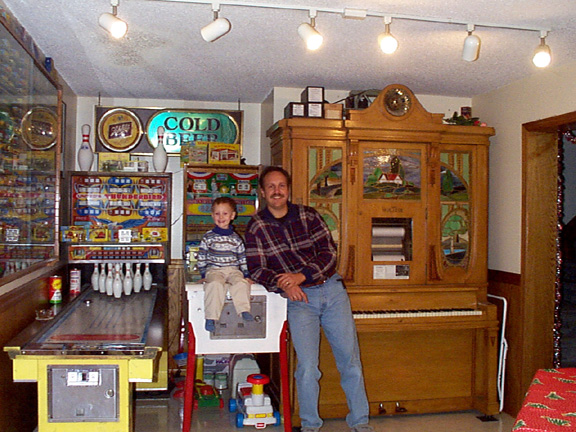 On the right is a Wurlitzer model C orchestrion made around 1914. This one plays a 10 tune roll and has 7 different instruments in it. Loud enough to wake the dead
(and no volume control). It was made to entertain large groups of people in restaurants, night clubs and silent movie houses (in-between movies).
Also shown is a puck bowler or shuffle alley, and a Grand Slam "Pitch-n-Bat" machine.
On the right is a Wurlitzer model C orchestrion made around 1914. This one plays a 10 tune roll and has 7 different instruments in it. Loud enough to wake the dead
(and no volume control). It was made to entertain large groups of people in restaurants, night clubs and silent movie houses (in-between movies).
Also shown is a puck bowler or shuffle alley, and a Grand Slam "Pitch-n-Bat" machine.
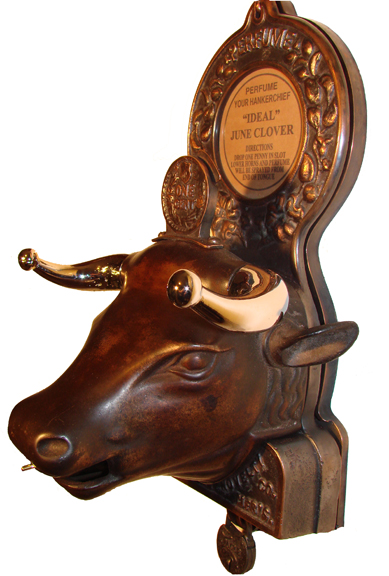
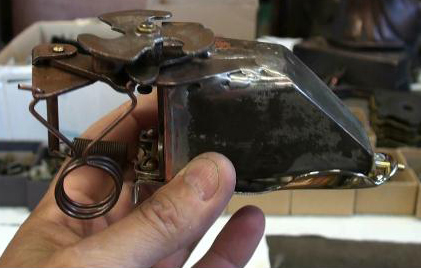 A rare coin operated perfume dispenser. This is a Bull's Head perfume vendor, made in 1904 by the Continental Novelty Company.
You drop a penny into the bull's head and crank his nickel plated horns. The bull responds by spitting perfume at you.
The intent was to spray your handkerchief, then carry the scent around with you. A real hit with the ladies...
A rare coin operated perfume dispenser. This is a Bull's Head perfume vendor, made in 1904 by the Continental Novelty Company.
You drop a penny into the bull's head and crank his nickel plated horns. The bull responds by spitting perfume at you.
The intent was to spray your handkerchief, then carry the scent around with you. A real hit with the ladies...
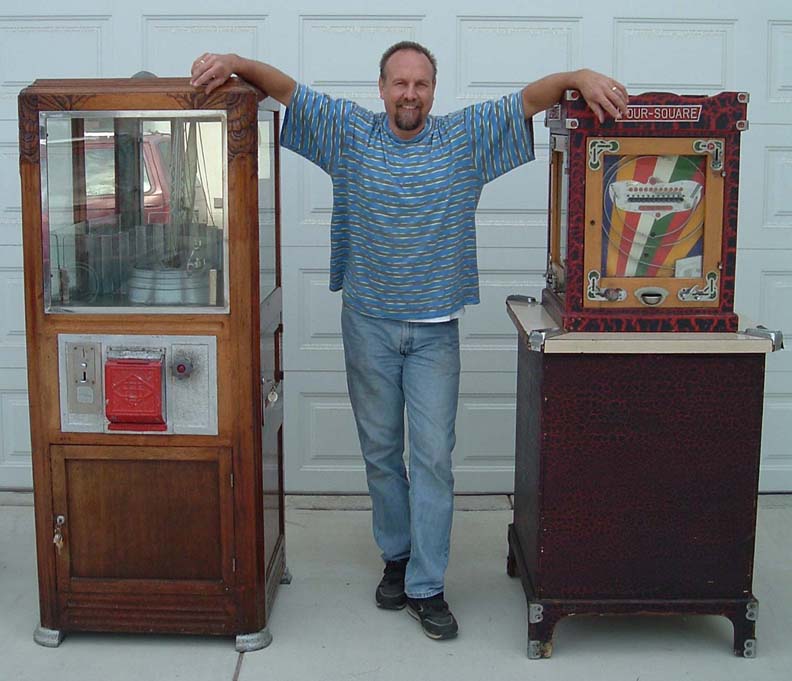
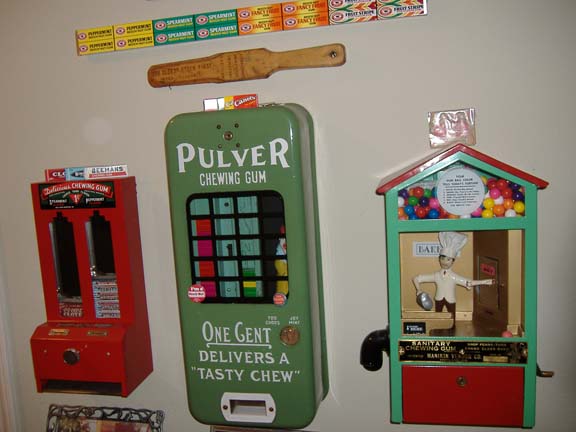 On the left, are two games found at a local estate auction. The first is a French "Digger" crane game from the 1930's. The second game is a "Four-Square" English gambling
device called a "Byrans Allwins" (circa 1950's). There is a great website at http://www.melright.com/bryans/
that documents these games. It takes a
large size British Copper Penny. For 1 cent you get to flip a steel ball up and around the loop inside. If you land in a winning hole, you then crank the
handle and get paid off in coins. They are typically found individually (one machine being just the upper half of one side that one person can play).
The unit pictured here is a floor standing cabinet with four Allwins installed, one on each side.
If you have any of these games for sale, please contact me.
On the left, are two games found at a local estate auction. The first is a French "Digger" crane game from the 1930's. The second game is a "Four-Square" English gambling
device called a "Byrans Allwins" (circa 1950's). There is a great website at http://www.melright.com/bryans/
that documents these games. It takes a
large size British Copper Penny. For 1 cent you get to flip a steel ball up and around the loop inside. If you land in a winning hole, you then crank the
handle and get paid off in coins. They are typically found individually (one machine being just the upper half of one side that one person can play).
The unit pictured here is a floor standing cabinet with four Allwins installed, one on each side.
If you have any of these games for sale, please contact me.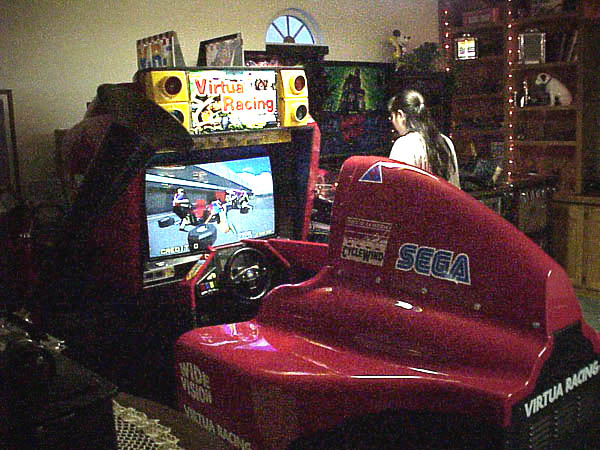
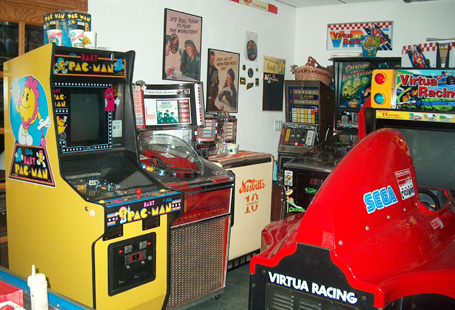 Sega Virtua Racing Deluxe from 1992. The cabinet has an air compressor in the rear and seven air bags in the seat. The player "feels" each bump, curve
and crash during the race. Also shown is a Baby PacMan video game. This is a combination video and pinball machine. It's old style PacMan, but with
two exit tunnels at the bottom of the video monitor. If your PacMan goes down a tunnel, the video is suspended and you continue game play on the
miniature pinball playfield. When the ball drains, the action resumes on the video screen. Other items in this picture include the AMI Continental Jukebox,
Nesbitt's soda cooler, a Bally '70s vintage slot machine and a Creature from the Black Lagoon pinball.
Sega Virtua Racing Deluxe from 1992. The cabinet has an air compressor in the rear and seven air bags in the seat. The player "feels" each bump, curve
and crash during the race. Also shown is a Baby PacMan video game. This is a combination video and pinball machine. It's old style PacMan, but with
two exit tunnels at the bottom of the video monitor. If your PacMan goes down a tunnel, the video is suspended and you continue game play on the
miniature pinball playfield. When the ball drains, the action resumes on the video screen. Other items in this picture include the AMI Continental Jukebox,
Nesbitt's soda cooler, a Bally '70s vintage slot machine and a Creature from the Black Lagoon pinball.
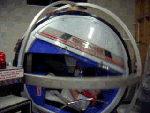 And finally, the "Grand Daddy" of all arcade games from the 20th century. The Sega R360 flight simulator.
It takes 220V 3-phase power to run this baby! Two servo controlled axis of movement combine with dual
slip rings to give you a full 360º of rotation in every direction. It gets some people sick just watching it!
And finally, the "Grand Daddy" of all arcade games from the 20th century. The Sega R360 flight simulator.
It takes 220V 3-phase power to run this baby! Two servo controlled axis of movement combine with dual
slip rings to give you a full 360º of rotation in every direction. It gets some people sick just watching it!
Please contact me if you have any questions,
or visit my main webpage at http://www.GameRoomRepair.com for more information.
Thanks for your visit.

Kevin R. Keinert
4351 Beverly Dr.
Santa Maria, California
93455 USA
(805) 937-8881